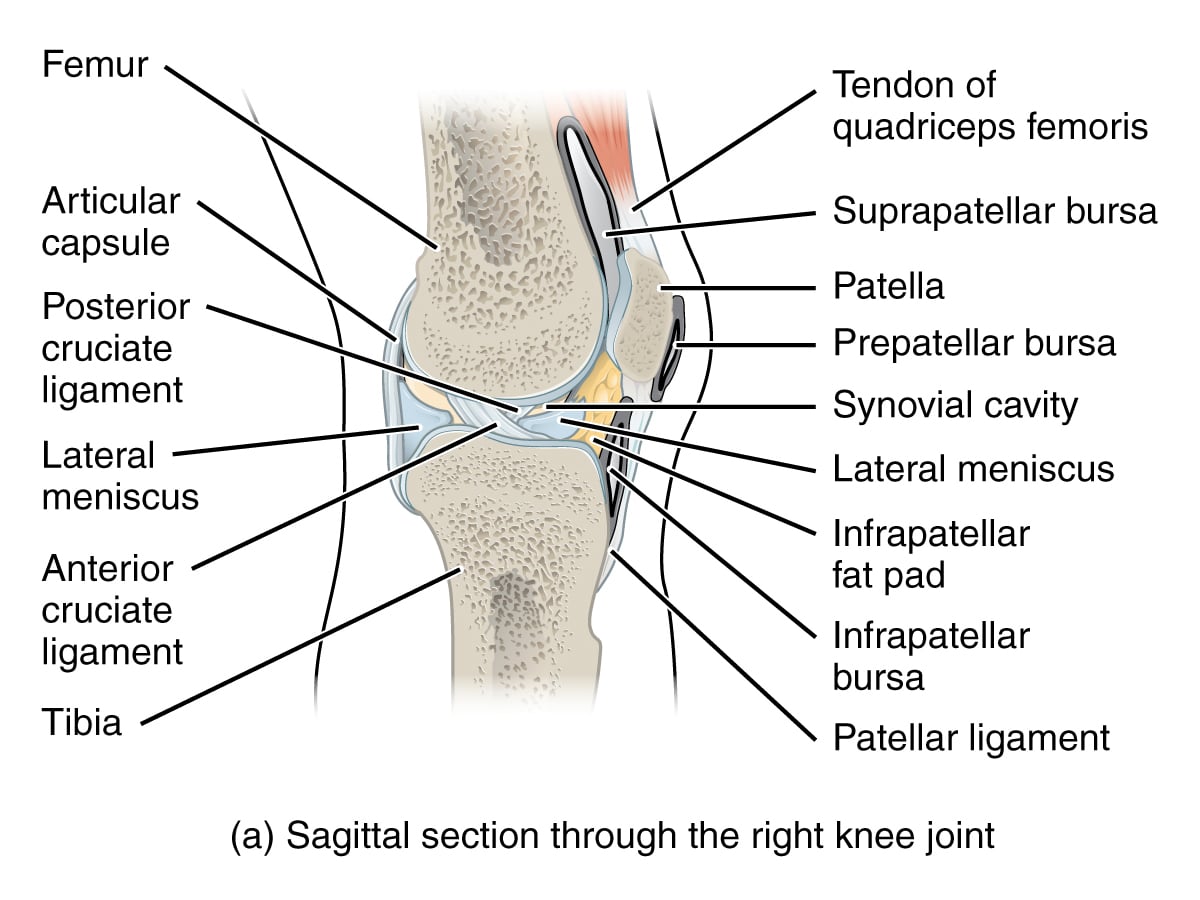Have you ever wondered what makes your knee bend and straighten with such incredible ease? The answer lies within the intricate structure of the knee joint, a marvel of human engineering. This complex joint, responsible for countless movements from walking to jumping, is a testament to the body’s remarkable design. In this exploration, we’ll navigate the anatomy of the knee, unraveling the fascinating components that come together to form this essential joint.

Image: www.bce.snack.com.cy
Understanding the knee joint is not just a matter of academic curiosity. It’s crucial knowledge for anyone who wants to maintain their mobility, prevent injuries, and understand the mechanics of how their body functions. As we delve into the intricacies of this joint, we’ll uncover why it’s susceptible to injury, how to protect it, and the amazing adaptations that enable us to move with grace and power.
The Knee Joint: A Symphony of Bones and Tissues
A Foundation of Bones
At the center of the knee joint lies the femur, the largest bone in the human body. Its lower end connects with the top of the tibia, the shin bone, forming the hinge-like structure. A smaller bone, the fibula, sits alongside the tibia, contributing to stability but not directly participating in the knee joint proper.
Cartilage: The Cushioning Factor
Between the femur and tibia, a layer of hyaline cartilage acts as a shock absorber, preventing bone-on-bone friction. This smooth, slippery tissue allows the bones to move effortlessly against each other during flexion and extension. Additionally, the menisci, C-shaped cartilaginous discs, provide further cushioning and stability within the joint.

Image: quizlet.com
Ligaments: The Unsung Heroes
The knee joint wouldn’t be able to withstand the forces of movement without the strong, fibrous bands of tissue called ligaments. These ligaments act like natural ropes, connecting the bones and limiting excessive motion. Key ligaments include the anterior cruciate ligament (ACL), which prevents the tibia from sliding forward, and the posterior cruciate ligament (PCL), which prevents the tibia from sliding backward. The medial collateral ligament (MCL) and lateral collateral ligament (LCL) on the sides of the knee stabilize the joint against sideways forces.
Muscles: The Powerhouse
The muscles surrounding the knee play a crucial role in coordinating movement. The powerful quadriceps muscles at the front of the thigh extend the leg, while the hamstring muscles at the back of the thigh bend the knee. The gastrocnemius and soleus muscles in the calf contribute to ankle movement and also contribute to knee stability.
The Mechanics of Movement
The knee joint is a marvel of biomechanics, allowing for a wide range of movement. It’s primarily a hinge joint, permitting flexion (bending) and extension (straightening). However, it also allows for a limited amount of rotation, especially when the knee is slightly bent. This rotational capability is essential for activities like walking and turning.
Labeling the Knee Joint: A Visual Guide
Visualizing the knee joint is essential for grasping its complexities. Various diagrams and illustrations are available online and in textbooks. When labeling the knee joint, it’s important to include the following anatomical components:
- Bones: Femur, tibia, fibula
- Cartilage: Hyaline cartilage, menisci
- Ligaments: ACL, PCL, MCL, LCL
- Muscles: Quadriceps, hamstrings, gastrocnemius, soleus
Common Knee Injuries
Despite its robust design, the knee joint is vulnerable to injury, especially during high-impact activities and sports. Common knee injuries include:
- Ligament tears: Tears in the ACL, PCL, MCL, or LCL can occur due to sudden forceful twisting or impact.
- Meniscus tears: These can happen from sudden twists or impacts, damaging the cartilage in the menisci.
- Patellar tendinitis: Inflammation of the tendon connecting the kneecap (patella) to the shin bone.
- Osteoarthritis: A degenerative joint disease that affects the cartilage and bone in the knee.
Protecting Your Knees
A healthy lifestyle is crucial for maintaining strong and resilient knees. The following strategies can help prevent injuries and promote knee health:
- Warm up before exercise: Gently prepare your muscles and joints for activity.
- Strength training: Strengthen the muscles surrounding the knee to improve stability.
- Wear appropriate footwear: Choose shoes that provide support and cushioning for your feet and ankles.
- Maintain a healthy weight: Excess weight puts added stress on your knee joints.
- Stretch regularly: Improve flexibility and range of motion, reducing strain on your knee.
The Future of Knee Health
The field of orthopedics is constantly evolving, with groundbreaking innovations improving treatment options for knee injuries and conditions. Advanced surgical techniques like minimally invasive procedures and robotic-assisted surgery are making knee replacements safer and more effective. Regenerative medicine is also promising, with research exploring the use of stem cells and growth factors to repair damaged cartilage and promote healing.
Label The Knee Joint
Final Thoughts
The knee joint is a testament to the intricate beauty and functionality of the human body. Understanding its anatomy, mechanics, and potential vulnerabilities empowers you to take proactive steps toward protecting your knees and maintaining optimal mobility. Whether you’re an athlete striving for peak performance or simply a person seeking to enjoy a lifetime of active living, learning about the knee joint is a valuable investment in your health and well-being. So, embrace the knowledge, take care of your knees, and continue to move with confidence and purpose.






